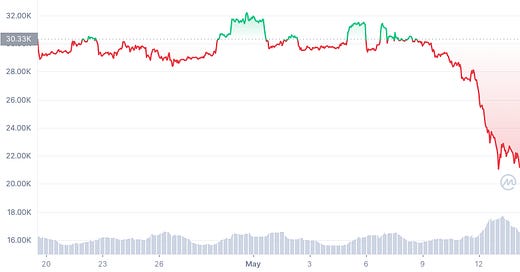Crypto Carnage: Frozen Accounts, Wobbling Stablecoins, Layoffs
Klarna Valuation Could Drop to $15b, CFPB Wants Standardized BNPL Reporting, Brex Abandons Small Biz, CFPB on "Rent-a-Bank"
Hey all, Jason here.
This issue is coming to you from my hometown of Chicago. I’m in town for a couple of weeks to catch up with family and friends (and endure heat indices exceeding 100°, apparently.)
If you’re Chicago-based, I should be downtown a handful of days between now and the end of the month — if you’d like to grab a coffee, drop me a line, and …



